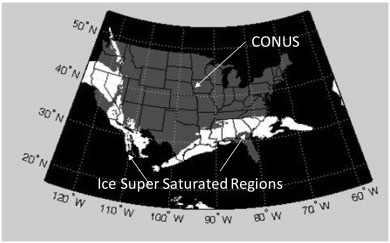Aviation Solutions
Aviation contributes more to global warming than heating due just to CO2 emissions;
contrails and other short-lived climate forcers (SLCFs) triple the heating effect [1]. Google, using artificial intelligence (AI), has predicted routes over the US that avoid the
conditions that create contrails. After 70 test flights, it was found that these predictions
reduced contrails by 54% compared with flights that didn't use the predictions [2].
Aviation is responsibe for about 6% of the globe's warming. Contrails cause a large part of
that heating. Flying above ice supersaturated regions where contrails form, rather than through
them, can reduce the warming effects by as much as 92% for the United States. [1].
